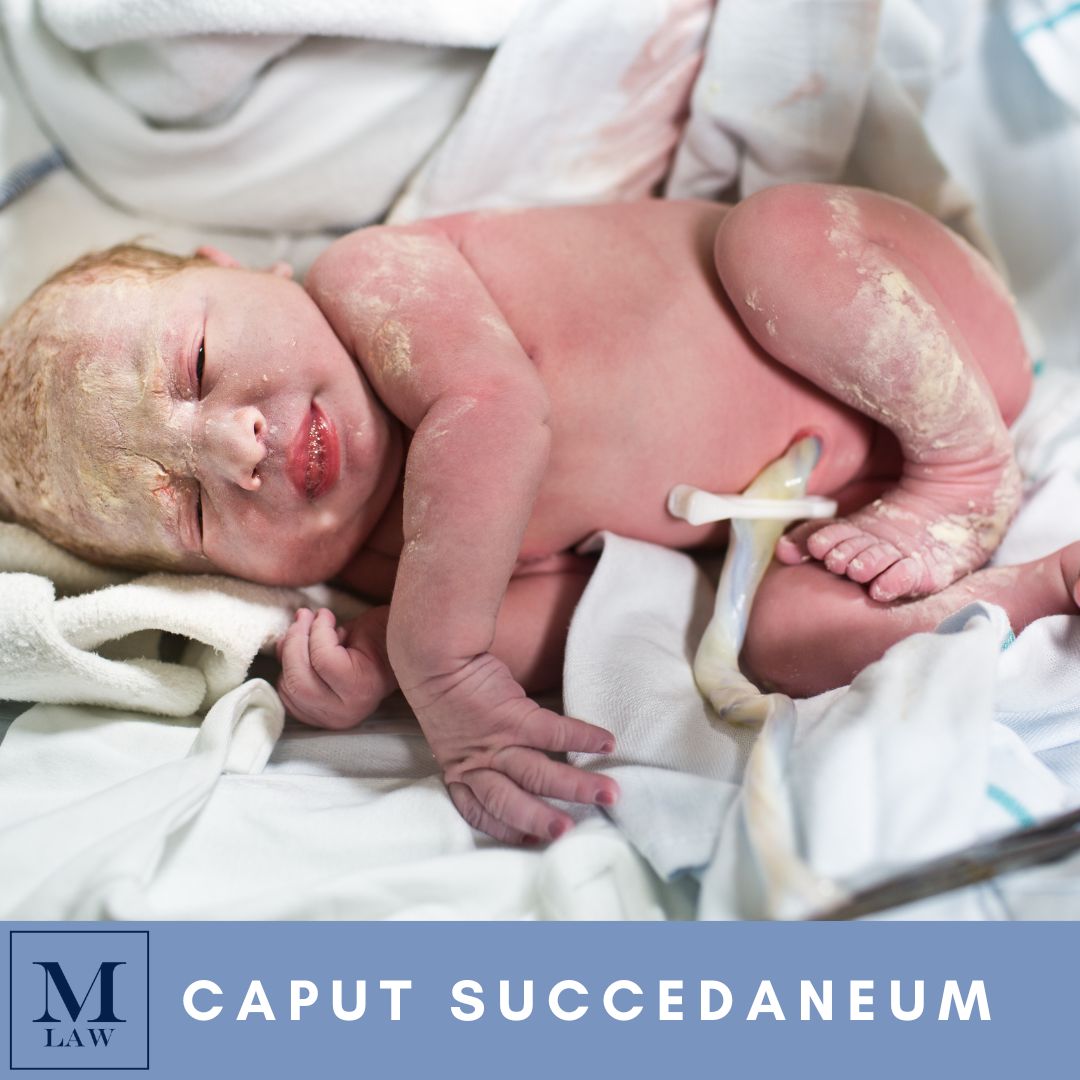Caput succedaneum is a condition characterized by swelling or bruising of a newborn baby’s scalp, particularly the area overlying the skull bones. It is a common occurrence during childbirth and is often caused by pressure exerted on the baby’s head as it passes through the birth canal. Caput succedaneum is a form of soft tissue swelling, which may be accompanied by fluid accumulation under the baby’s scalp.
Caput succedaneum typically appears as a generalized swelling or puffiness on the scalp, and it may be more pronounced in the area where the baby’s head presented first during delivery. The swelling may be soft, fluctuant, or boggy to the touch. It is usually not associated with any underlying skull or brain abnormalities and does not pose any long-term health risks.
The swelling from caput succedaneum typically resolves on its own within a few days to a week after birth, without requiring any specific treatment. However, medical professionals may monitor the condition to ensure that it does not lead to complications such as jaundice or infection.
Caput succedaneum should not be confused with cephalohematoma, which is another condition involving bleeding under the scalp but is limited to the periosteum (the outermost layer of the skull bones) and does not cross suture lines.
How long does caput succedaneum last?
Caput succedaneum typically resolves on its own within a few days to a week after birth. The exact duration can vary from baby to baby. In most cases, the swelling gradually subsides as the excess fluid is reabsorbed by the body. However, it’s important to note that the resolution time can depend on the severity of the swelling and individual factors.
In general, mild cases of caput succedaneum may resolve within a few days, while more significant swelling may take closer to a week to fully disappear. The use of gentle massage or applying warm compresses can sometimes help expedite the healing process.
If you have any concerns about your baby’s caput succedaneum or if the swelling persists for an extended period, it is recommended to consult a healthcare professional. They can evaluate the condition and provide appropriate guidance based on the specific circumstances.
Is caput succedaneum serious?
Caput succedaneum is generally not considered a serious condition. It is a common occurrence during vaginal childbirth and is usually harmless. The swelling and bruising on the baby’s scalp typically resolve on their own within a few days to a week without causing any long-term complications.
While caput succedaneum is not typically a cause for concern, there are a few potential risks to be aware of:
- Increased risk of jaundice: Caput succedaneum can sometimes be associated with an increased risk of jaundice, a condition characterized by yellowing of the skin and eyes due to elevated levels of bilirubin. This is because the breakdown of blood cells in the affected area can release extra bilirubin into the baby’s bloodstream. However, with proper monitoring, jaundice can be managed effectively.
- Risk of infection: The swollen area may be more vulnerable to infection, especially if there are any breaks in the skin. It’s important to keep the area clean and watch for any signs of infection, such as redness, warmth, swelling, or discharge. If you notice any concerning symptoms, it’s best to consult a healthcare professional.
- Association with underlying head trauma: Caput succedaneum is usually a benign condition and does not indicate any underlying skull or brain injuries. However, in rare cases, severe caput succedaneum may coexist with other head injuries. It’s important for medical professionals to assess the condition thoroughly to rule out any other potential complications.
Your healthcare provider can provide personalized advice based on the specific circumstances of your baby.
What is the difference between a caput succedaneum and a cephalohematoma?
Caput succedaneum refers to swelling or edema that occurs on the soft tissues of the scalp, usually crossing suture lines. It is more generalized and can appear over a larger area of the baby’s head. Cephalohematoma, on the other hand, is a collection of blood beneath the periosteum, which is the fibrous covering of the skull bones. It is confined to a specific area and does not cross suture lines.
Caput succedaneum involves soft tissue swelling and is often accompanied by fluid accumulation. In contrast, cephalohematoma is a collection of blood, creating a distinct, localized swelling. The blood does not readily cross suture lines, leading to the characteristic appearance of a raised bump on the baby’s head.
Caput succedaneum is primarily caused by pressure or trauma during childbirth. The pressure on the baby’s head, particularly during the pushing stage of labor, leads to fluid accumulation and swelling. Cephalohematoma, on the other hand, is typically caused by trauma to the blood vessels between the skull and periosteum. This trauma can occur due to the pressure exerted on the head during delivery or the use of forceps or vacuum extraction.
Caput succedaneum usually resolves within a few days to a week after birth, as the excess fluid is reabsorbed by the body. Cephalohematoma, however, takes a longer time to resolve. It can persist for weeks to months as the blood clot is slowly reabsorbed. In some cases, the blood may calcify, leading to a harder bump that may take even longer to fully disappear.
Caput succedaneum is generally a benign condition and does not carry significant risks. Cephalohematoma, although not usually dangerous, can be associated with a higher risk of complications such as infection or the development of jaundice.
Both are typically self-limiting conditions and do not cause long-term harm to the baby. However, it is advisable to seek medical attention to confirm the diagnosis and monitor for any potential complications.
If your baby’s condition does not improve, and you suspect medical negligence, get in touch with the birth injury attorneys here at Merson Law PLLC. Our team can help you seek financial compensation for severe birth injuries.








